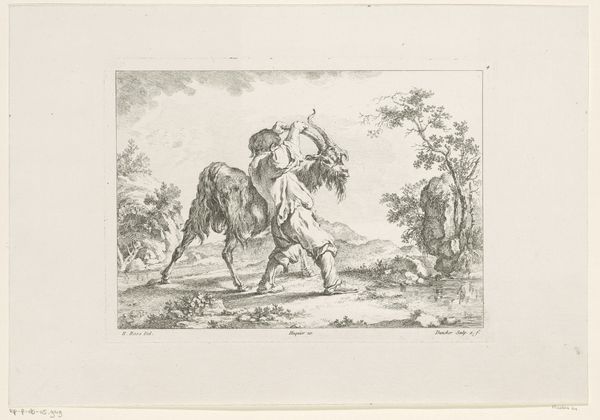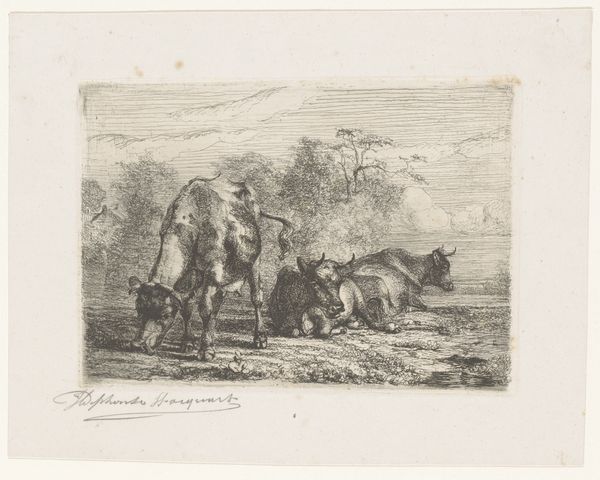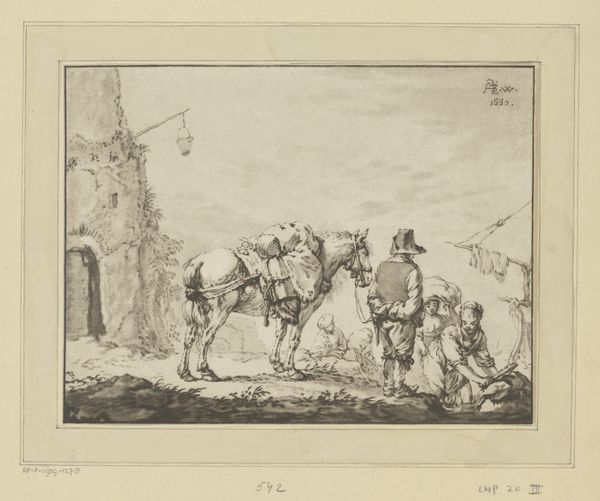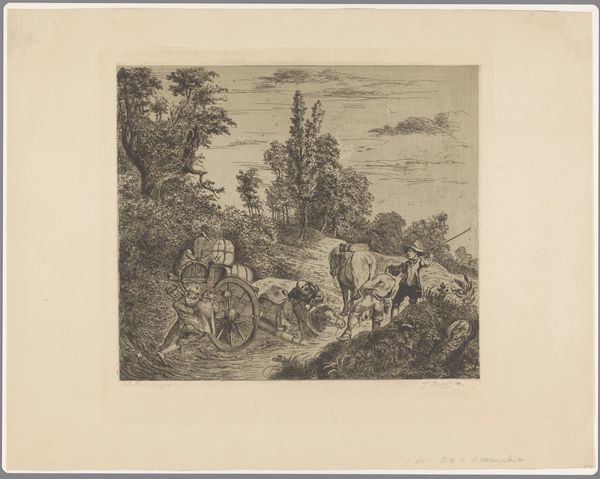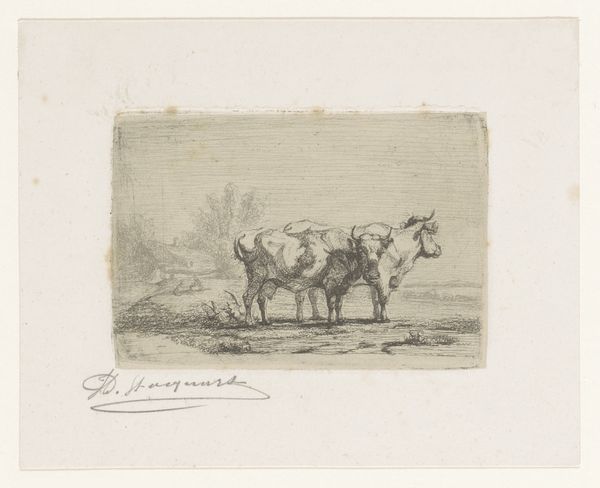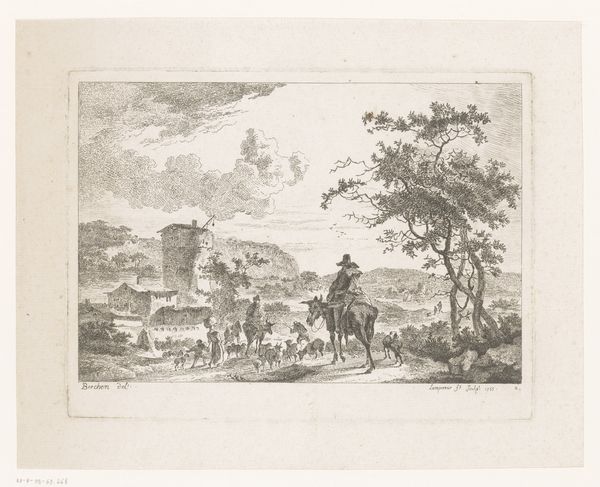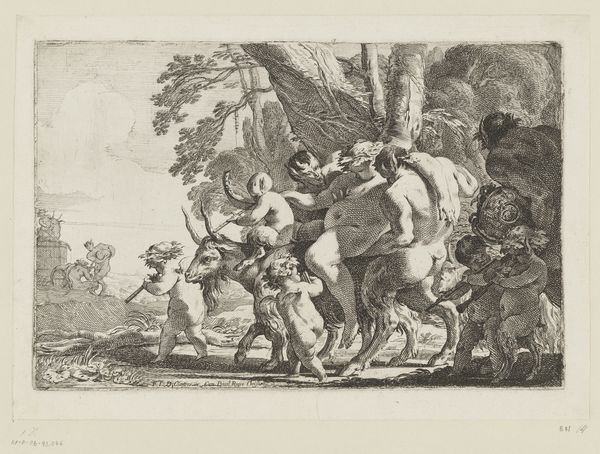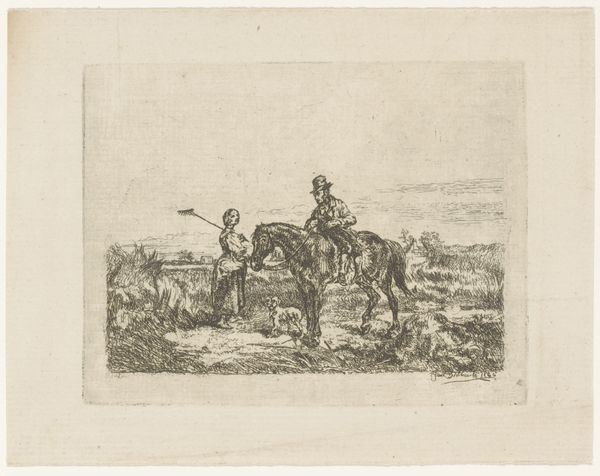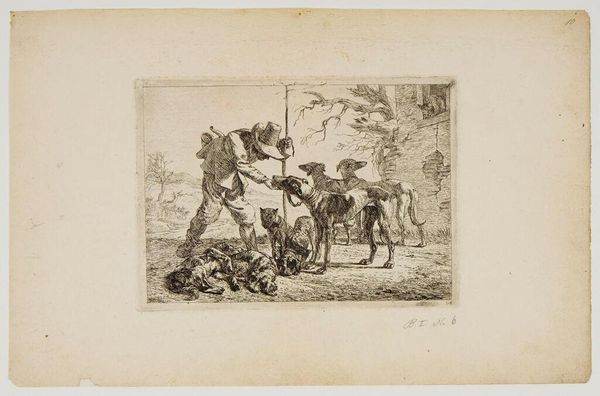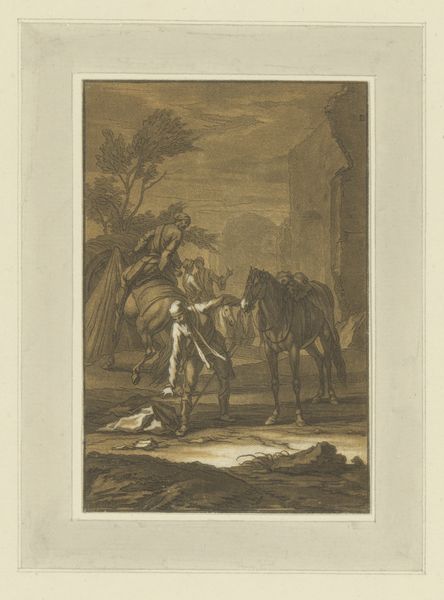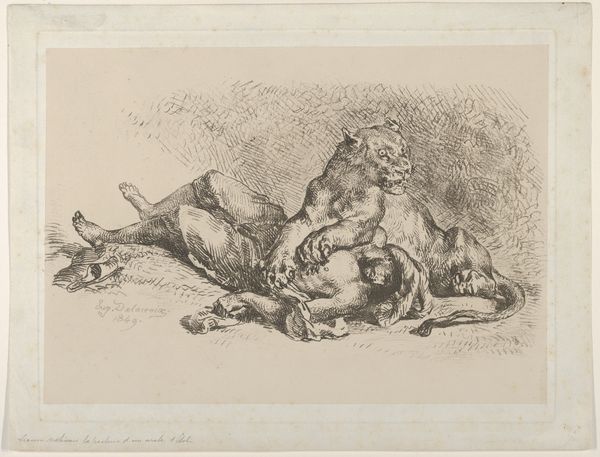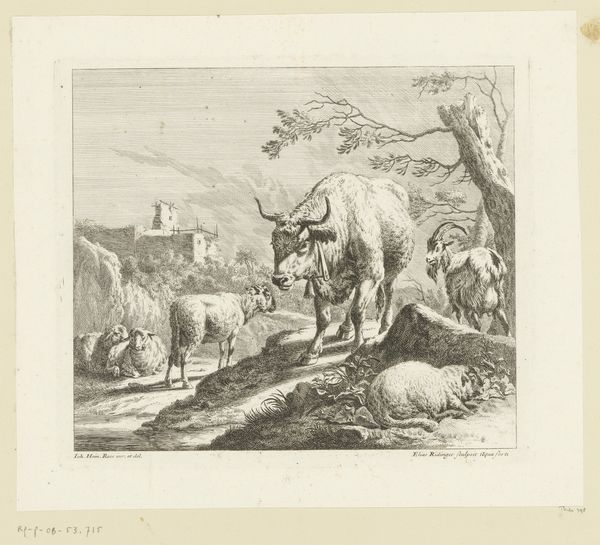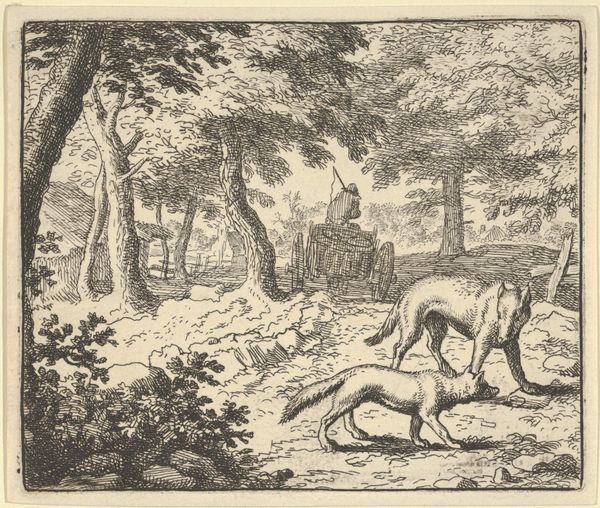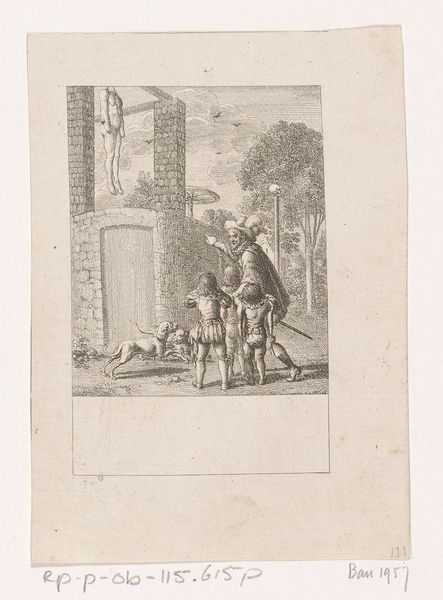
print, etching
# print
#
etching
#
landscape
#
horse
#
genre-painting
#
realism
Dimensions: height 80 mm, width 110 mm
Copyright: Rijks Museum: Open Domain
Curator: This etching by Jan Stobbaerts, titled *Twee vrouwen op een bordes kijken naar een man die een paard voert*, which translates to *Two Women on a Landing Watching a Man Feed a Horse,* dates to 1860. Editor: My initial feeling is one of understated narrative, it is intriguing but also somewhat muted. The tonal range achieved through the etching process gives the piece a distinct texture, particularly in the foliage and architecture. Curator: Yes, Stobbaerts was known for capturing scenes of everyday life, infused with a sense of quiet dignity. Notice how the women on the porch seem to represent observation and perhaps a gentle blessing. The horse-feeding itself is an archetypal moment of care. Editor: Absolutely, I can sense that symbolic weight you describe. Focusing on the compositional elements, the lines direct our gaze from the women, down the staircase, across the horse to the feeding figure, then leads to the somewhat blurry landscape behind it. This draws our focus, while at the same time slightly disorienting it by softening edges. It's an interesting tension between focus and diffusion. Curator: Precisely. Consider the symbolism of the figures; horses throughout history have served as potent signs of strength, freedom, but here its subjugation through being fed highlights something deeper than simple strength, it’s the tension between mastery and care. Also notice how they mirror each other with a visual balance. Editor: That creates a certain mood doesn’t it? A certain kind of restrained drama that permeates the image. Stobbaerts makes use of shadow in certain sections which reinforces certain visual motifs. For example, this attention to shading underscores the intimate connection the subject matter presents us with: two women, a feeding boy and horse – and through our voyeuristic gazing we also become active observers within their realm, giving it extra psychological nuance. Curator: Indeed. The etching beautifully showcases this 19th-century genre painting as a mirror, or lens if you will, that helps explore subtle social relations, especially across the gender roles. What is deemed worthy of observing becomes the point, ultimately revealing not necessarily a historical snapshot, but what mattered within cultural consciousness and domestic sphere. Editor: Well put, looking at it in this light brings such clarity. Overall I would have to conclude, through the lines, shapes and visual cues the emotional mood really enhances this piece by Stobbaerts. It adds significant structural dynamism. Curator: It certainly reveals multiple layers of understanding, not only to reveal certain techniques used by the artist, but by recognizing visual metaphors through the lens of our past cultural experience too.
Comments
No comments
Be the first to comment and join the conversation on the ultimate creative platform.
